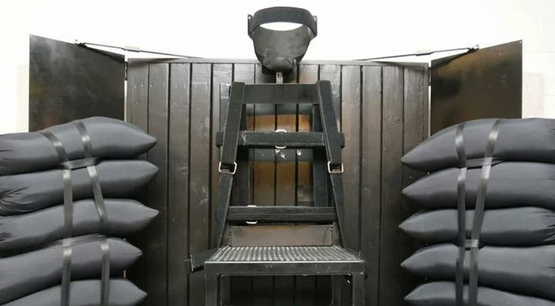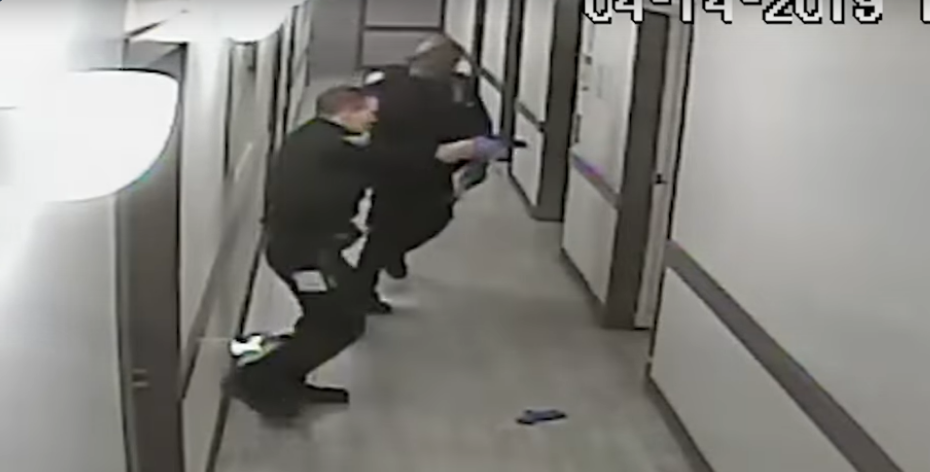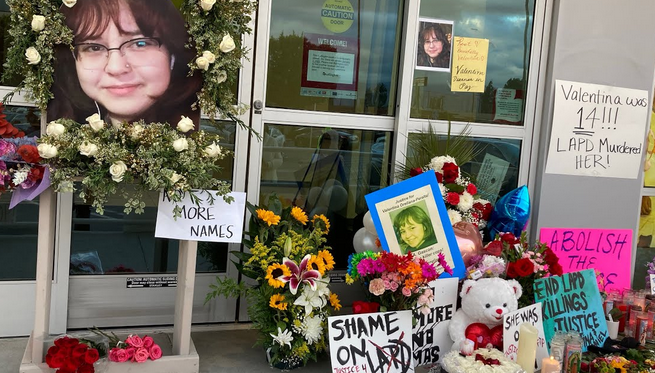Photos: YouTube\Twitter
South Carolina’s plans to execute Richard Moore by firing squad on April 29 were temporarily stayed by the state supreme court Wednesday.
No one has been executed in South Carolina since 2011, and the state has not used a firing squad to kill a condemned person in the modern death penalty era.
Forced to “Choose” Between Electrocution and Being Shot to Death
The method is extremely rare. Since 1976, only three other people have been executed by firing squad—all three in Utah.
Last year, South Carolina joined Mississippi and Oklahoma when it passed a new law authorizing executions by firing squad in an effort to restart executions in the state.
Richard Moore is the first person subject to execution under the new law, which makes electrocution in South Carolina’s 110-year-old electric chair the default method of execution.
The law provides that, if the department of corrections determines that lethal injection is not available, the person will be electrocuted unless they elect death by firing squad. The person is required to make that election in writing 14 days before the execution date.
Because South Carolina’s DOC has said that it cannot obtain lethal injection drugs, Mr. Moore was forced to elect death by firing squad to avoid the electric chair.
He said in a written statement on April 15 that he did not believe or concede that either method of execution before him was legal or constitutional. He explained that he elected death by firing squad because he more strongly opposes death by electrocution.
“I believe this election is forcing me to choose between two unconstitutional methods of execution,” Mr. Moore said, “and I do not intend to waive any challenges to electrocution or firing squad by making an election.”
Cruel and Unusual Punishment
Lawyers for Mr. Moore are challenging the new law, arguing that both electrocution and the firing squad are cruel and unusual punishments barred by the Eighth Amendment.
“The electric chair and the firing squad are antiquated, barbaric methods of execution that virtually all American jurisdictions have left behind,” Mr. Moore’s attorney, Lindsey Vann, wrote in a motion filed on April 8.
Mr. Moore’s attorneys are also challenging the DOC’s claim that it cannot find lethal injection drugs. They have pointed out in court filings that since the DOC first said in 2013 that it could not carry out a lethal injection because it lacked the necessary drugs, 13 states and the federal government “have carried out 222 executions by lethal injection.”
On Thursday, April 14, a Richland County court judge denied the State’s motion to dismiss Mr. Moore’s lawsuit, which includes three other men facing execution. Mr. Moore’s lawyers asked the state supreme court to stay his execution while the court evaluates his constitutional challenge to the method of execution, and the court issued a temporary stay on Wednesday, April 20.
Not the “Worst of the Worst”
The state supreme court has also been asked to stay the execution to allow the U.S. Supreme Court to review whether Mr. Moore’s death sentence is a disproportionate punishment compared to similar crimes.
Mr. Moore, who is Black, was unarmed when he entered a Spartanburg convenience store in 1999. The clerk, James Mahoney, was white and armed with a pistol. As the two men struggled over the gun, Mr. Moore was shot in the arm and Mr. Mahoney suffered a fatal gunshot wound in the chest.
Mr. Moore testified he grabbed a bag of money as an after-thought as he left the store and immediately went to a friend’s home to seek help for his injury. The friend testified that Mr. Moore said he had done something bad and needed to turn himself in.
When the friend refused to take Mr. Moore to the emergency room, he tried to drive himself but struck a telephone pole. A passing officer saw the accident and, when he approached, Mr. Moore got out of his truck, laid down in the road, and said, “I did it, I did it, I give up, I give up.”
Ms. Vann argues that because Mr. Moore did not bring a gun into the store, he could not have intended to kill someone when he walked in. That distinguishes his case from other death-penalty cases, she said.
“We have researched all cases in South Carolina ending in the death penalty and none of them are like this,” Ms. Vann told NPR.
Last week, the South Carolina Supreme Court rejected the argument that Mr. Moore’s death sentence is disproportionate compared to other armed robberies. But as Associate Justice Kaye Hearn wrote in dissent, the majority ignored the fact that Mr. Moore was unarmed when he entered the store.
“I have not found any other case involving a defendant receiving the death penalty where he entered the place of business unarmed. Indeed, the State specifically conceded at oral argument that it could not cite to any case in our state with this distinguishing fact,” she wrote. “In my view, entering a convenience store unarmed falls well short of engaging in a cold, calculated, and premeditated murder.”
“Moore’s crime does not represent the ‘worst of the worst’ in terms of those murders reserved for the death penalty,” Justice Hearn concluded.
The Role of Race
In determining that Mr. Moore’s sentence is disproportionate to the facts of the crimes, Justice Hearn also underscored how his case “highlights many of the pitfalls endemic to the death penalty, beginning with the role race plays.”
Mr. Moore was convicted and sentenced to death by a jury with 11 white jurors and one Hispanic juror, she observed. No Black jurors were selected even though several African Americans were in the jury pool.

Of the 282 people that have been executed since 1912, when official records began, 208 (74%) were Black and 74 (26%) were white, Justice Hearn noted.
She also identified “alarming statistics” concerning the race of the victim:
From 1985 to 2001, there were twenty-one cases in Spartanburg County where a death notice was filed, and in all but one the victim was white. As Moore highlights in his petition for habeas relief, during the first eight years of that timeframe, the solicitor’s office sought the death penalty in 43% of death eligible cases involving a white victim but not once in a case with a Black victim.
“The foundation of our capital punishment scheme is deeply rooted in racial disparity,” Justice Hearn wrote, adding that “it is disingenuous to discount the factor race plays” in cases like Mr. Moore’s.













